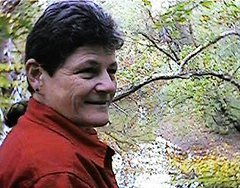Choosing A Camera
The camera has undergone much modification and development over the 150 years since it’s introduction.
In 1839 Daguerre in Paris introduced photography using ideas developed by his countryman Niepce.
George Eastman and Eastman Kodak brought photography to the common man with mass production of cameras in the 1890’s,
The German’s produced the Leica and Rolleiflex bringing the highest quality engineering and optical excellence to mass production. Leica and Rolleiflex are still much coveted and valued cameras.
The Japanese with their electronic technology in the 1950’s advanced the design of lenses and optics, took micro circuitry and computer chips developed by American companies and devised metering systems, automatic exposure and auto focus systems that we take for granted today.
When you think about all these advances, and realize it has all taken place over a mere 150 years it sort of boggles the mind. Especially now that we are entering the digital age. Your watches are digital, you have digital media to record on, and the optics for digital cameras continue to improve to rival film cameras. (there are some who think that film will always be a better picture than a digital one.)
What kind of camera you opt for yourself is partially a choice you make based on your finances, the use to which you want to put your photographic art, and your own preferences.
Unless you are going to do exclusively studio work, and have the bucks to put into a medium or large format camera, you most likely will choose an slr, dslr or range finder camera.
slr: Single lens reflex means you can view the image directly through the lens for focusing. A variety of lens can be mounted on your slr and usually there are things like auto focus and manual over rides for settings.(usually 35mm film cameras although 124 was popular as well)
dslr: Digital slr. The same as above only instead of film you record your images on digital media such as xd, compact flash cards, sd cards or some kind of media card installed in the camera.
Range finders: This camera takes more getting used to but has the advantage of being quiet unlike the slr which has a mirror that flips out of the way for the picture to be taken. You do not see exactly what the lens/film will see when you look through the viewfinder. The lack of any camera noise can be beneficial in nature shoots.
There are also fixed focus cameras, variable focus, auto focus, interchangeable lens, filters, lens speeds, and a variety of other things that can confuse you if you are going out to buy your first camera.
The bottom line is this. It really does not matter that much what kind of camera you use, it is how you use it. You can take some wonderful pictures with just a fixed focus limited mega pixel camera if you understand light and how your camera works.
Some things you can avoid are uv filters. The camera shop is looking to sell you more goodies to go with your camera and lens and they have this uv lens that is to "protect" your lens. I suppose there are some folks who frequently try to etch on the lens of their camera, but this filter really does not serve much of a purpose, and gives you one more layer of glass to go through when you are putting that reflected light onto your media be it film or compact flash card. Filters can be of use under certain circumstances, but I have two uv filters and have never had occasion to need them. I do have a polarizing filter which is a very good investment if you are going to take pictures in bright sunlight. (hey I live in Southern California, where it is almost always in bright sunlight.)
Since I have a dslr myself, most of my examples will be for slr and dslr cameras in the postings to come. Pretty much anything that you can say about a dslr goes for an slr, except of course that a 35mm slr uses film and might have things like auto advance (a type of film advance), auto rewind which a dslr has no need for.
The purpose of your lens, no matter what type lens it is, is to focus the light into a sharp image on the film or sensor that records your image. If you have a interchangeable lens camera, you can select the right lens for each job.
Whoa you say, didn’t you just say all lens do the same thing? Yes I did. Different lens produce different images when pointed at the same scene. The image is determined by two characteristics.. Lens speed and focal length.
Lens speed is the amount of light that a given lens can transmit in a given time. (a fast lens transmits a lot of light a slow lens transmits less light.) This should not be confused with the ability to capture a fast or slow moving object, it only has to do with the amount of light the lens can transmit.
Focal length is the distance in front of and behind the object you focus on that is in reasonably clear focus. As a general rule, the longer your lens, the shorter the focal length.
I will probably need to go into lens speed and focal length in far more detail in future entries of this blog. (as well as apertures, f-stops, iso, etc)
All these things are how you control and use the light .. and the light is what you are painting your pictures with.


0 Comments:
Post a Comment
<< Home